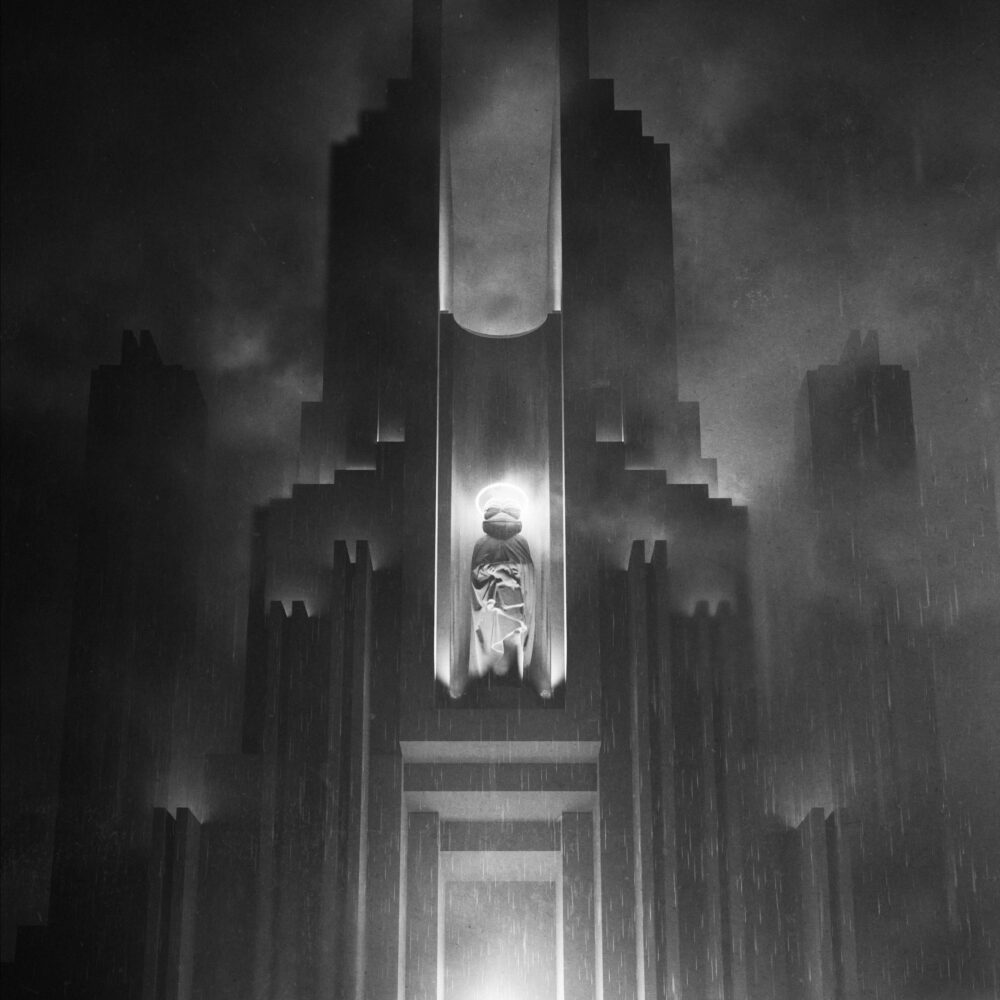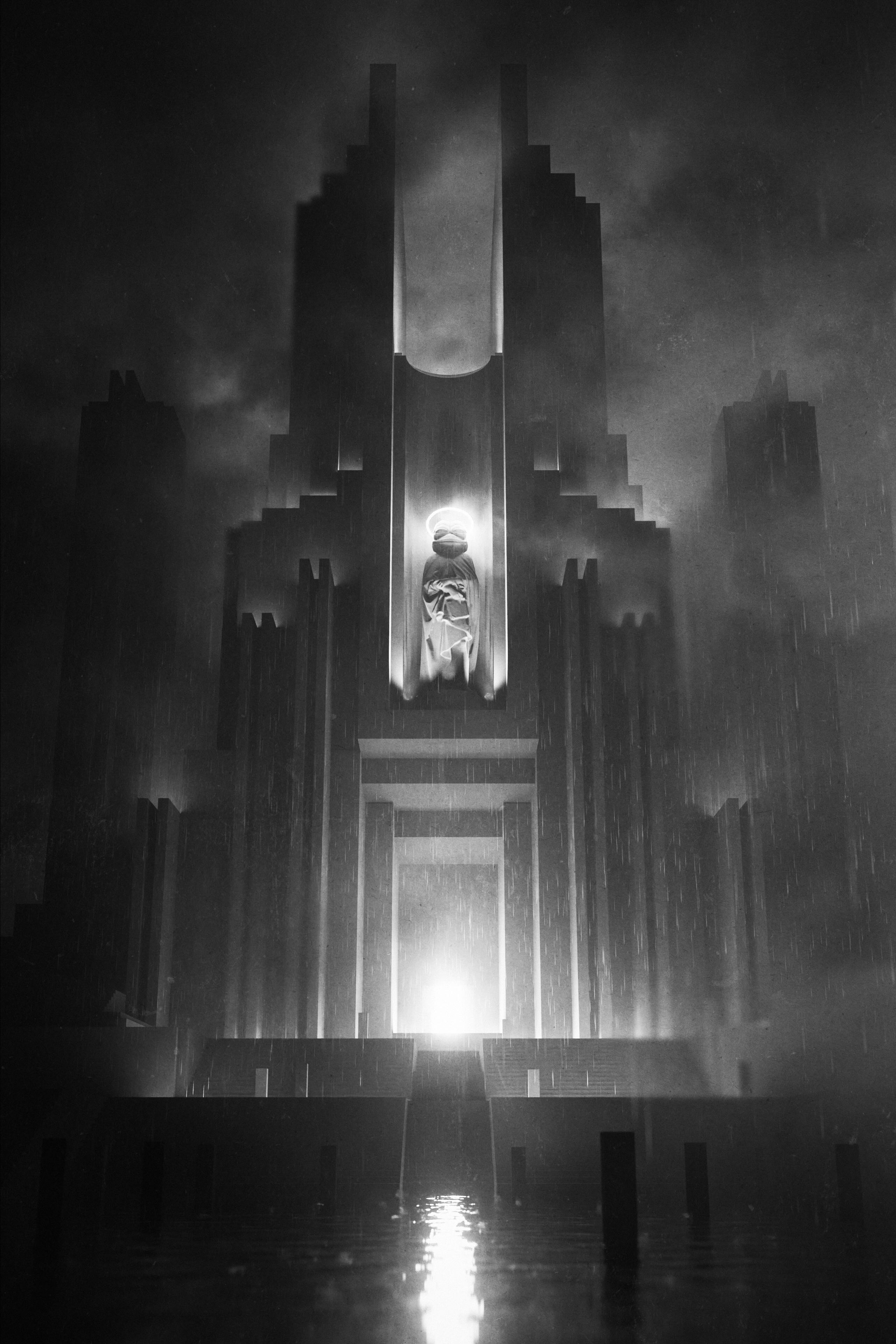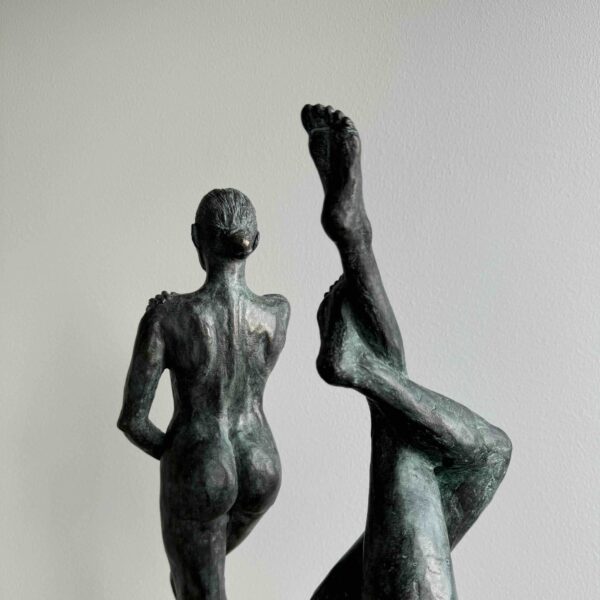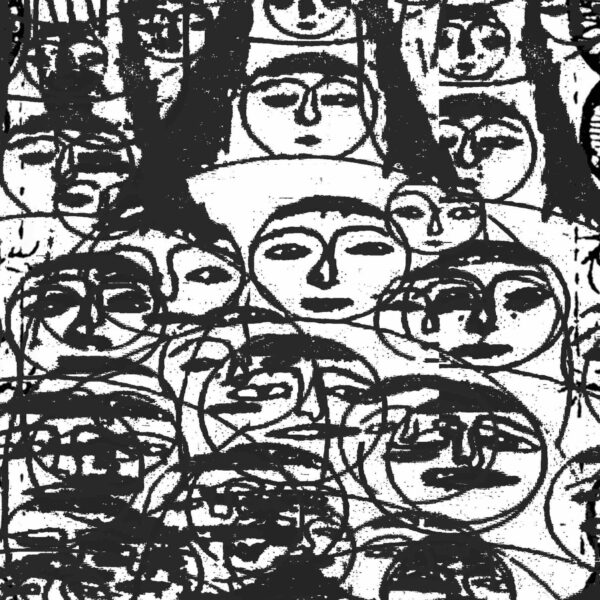Strano: In the Temple of Light and Silence
Strano doesn’t create images. He constructs rituals. His monochrome animations and rendered stills operate like meditations, slowly revealing sacred geometries carved in digital stone. The artist—Montreal-based Marcel Giannoccaro—moves across mediums like a monk through cloisters: with restraint, reverence, and a mastery of silence. Whether animated or still, his work explores what it means to look inward in an outward-facing age. Drawing from architecture, cinema, and sacred space, Strano conjures the spiritual residue of Brutalism and the haunting precision of mise-en-scène. His is a practice of negative space, of implied narrative, of loops that never resolve. Strano’s latest 1/1—Cattedrale di San Pepe, his first minted still on Ethereum— may be a new medium in his practice, but it is also an anchor and a place of return. Around it orbit three earlier looped works, each one a silent invocation of loss, repetition, and digital divinity.

- The Gardener
“It’s never enough.”
In The Gardener, we are dropped into a city of monoliths. Towering block-like buildings rise in fog, floating cubes blink with artificial light above them, casting soft beams through the density. The entire landscape feels like a memory of architecture, slowly eroding in atmosphere.
There is no gardener in sight, only the implication of one. The title is ironic, maybe even tragic. Instead of cultivation, we see decay by design. One central tower glitches slightly near its base, as if pixel erosion has begun at the foundation. Buildings appear solid but flicker with instability.
It’s a city not lived in, but watched over—perhaps once tended, now abandoned. The caretaking has become computational. The gardener is an algorithm. The cycle continues, but nothing grows.
In this subtle loop, Strano invites us to contemplate maintenance as a form of existential labor. The architecture is godless, but not soulless. It waits for something—attention, intervention, meaning. But it waits alone.
- The Evergreen Sequence
“An endless cycle of life held in suspension.”
Where The Gardener gestures toward dystopian entropy, The Evergreen Sequence reveals another kind of stasis: beauty preserved, but paralyzed. We peer down into a vertiginous shaft of light and floating blocks, framed by mirrored walls. Organic matter—ferns, vines—creep along the edges, but never encroach.
Everything hovers. Everything is still. Even the light feels museum-grade: directional, diffused, reverent.
This is not a forest—it’s a crypt of idealized nature. The symmetry and elevation of each rectangular form evoke an artificial ecology, a vertical arboretum trapped in render. One imagines this as the Edenic core of a long-dead planet—kept alive only through simulation.
Strano’s title, Evergreen, resonates with artificial permanence. What does it mean to keep something “alive” when its growth is frozen? The piece reads like a critique of digital memory: nature as something to be captured, modeled, controlled—not felt or feared.
This is nature-as-interface. Not wild, but ornamental. A perfect loop of reverence and repression.
- The Exit Hatch
“You’ve come this far. Don’t.”
Where the previous works build atmospheric density, The Exit Hatch offers rupture. An explosion of light and data fragments outwards, violently pixelated and radiant, as though a portal is breaking apart mid-load. We’re not seeing a door—we’re witnessing a moment of irreversible transformation.
The phrase attached—“You’ve come this far. Don’t.”—feels like a message caught between two realms: warning and invitation. Is it the voice of the machine urging caution, or a test from something beyond?
Unlike The Gardener and Evergreen, which are static environments, The Exit Hatch is kinetic. Motion here is disintegration. Bits dissolve, the light leaks, and form fails. If Strano’s earlier loops represent containment, this piece marks escape—but one that is violent, even tragic.
This is what ascension looks like when it’s forced. When the system can no longer hold the sacred, it collapses into scatter. The hatch doesn’t open. It explodes.

- Cattedrale di San Pepe
A sacred architecture of stillness
Strano’s newest 1/1 still, Cattedrale di San Pepe, is the culmination of these themes. A towering cathedral emerges from fog and rain, its brutalist geometry lit from within by a radiant inner core. At its center, a cloaked figure stands elevated in a luminous niche—small but unmistakable. It’s not a saint. It’s a Pepe.
Rendered with reverence, the meme icon becomes a sacred presence, unironic and mythical.. Pepe as a digital relic, not the internet’s trickster, here transfigured through Strano’s architectural solemnity into a kind of crypto-martyr. Cloaked, back turned, crowned in light, the figure merges meme culture with monastic iconography.
The result is startling. The image holds tension between humor and holiness, internet and eternity. It asks: what happens when the most reproduced symbol of our time is placed in the temple instead of the feed?
This is Strano’s most devotional work to date. Not because it imitates religion, but because it reassigns reverence. Cattedrale di San Pepe is more than a cathedral: it’s functioning as a memory vault, it is a digital chapel for a new pantheon.
The transition from animation to stillness isn’t a departure—it’s a quiet intensification. In Cattedrale di San Pepe, motion exists only in light and longing. The viewer becomes the loop, pulled upward toward structure, shadow, and something that refuses to explain itself.
It’s a place to pause. To look. To believe—or not.
Final Reflections: The Liturgy of the Loop
Strano is an architect of buildings, and also of thresholds. His works, both the animated and still, form a liturgy of spaces that challenge our relationship to time, perception, and belief. He renders the digital not as a tool, but as a temple.
While many digital artists explore speed, friction, and hyper-visibility, Strano chooses patience. His minimalism is not aesthetic and ethical. He resists the compulsion to resolve. Instead, he invites us to stay.
In a landscape of infinite refresh, Strano offers repetition. In a culture of commentary, he offers silence.
And in Cattedrale di San Pepe, he offers a monument, not to belief, but to the possibility of it.


